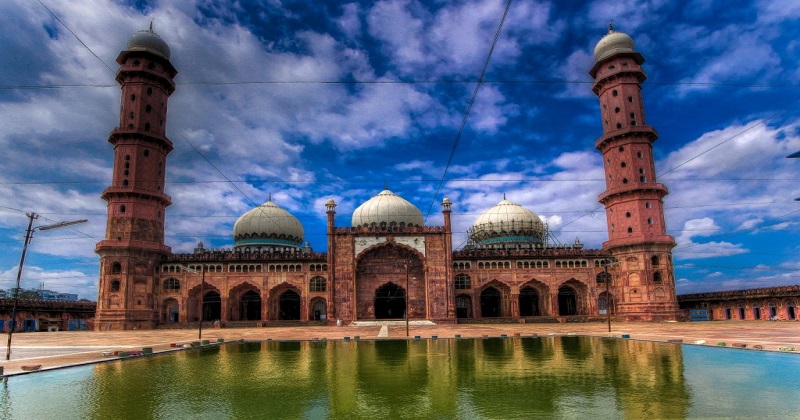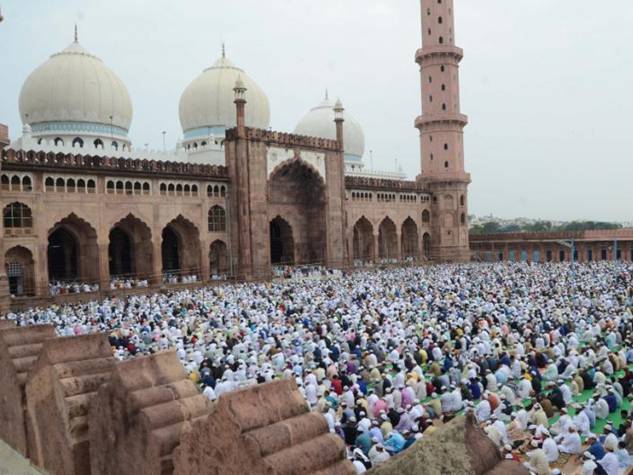
Jama Masjid, officially known as Taj-ul-Masjid, is a popular mosque in Bhopal. The largest mosque in India, it is not only a religious spot but a tourist attraction too. The construction of the mosque was commissioned by the third rulers of Bhopal-Nawab Shah Jahan Begum of Bhopal, wife of Baqi Mohammad Khan during the reign of Mughal Emperor Bahadur Shah Zafar.
The construction continued by her daughter Sultan Jahan Begum but could not complete it in her lifetime due to lack of funds and the war of 1857.

One of the biggest and most the graceful of the Mosques in India, the Taj-Ul-Masjid literally means ‘ The Crown of Mosques’. Against the backdrop of the historical city of Bhopal, the Taj-Ul-Mosque displays a spectacular sight.
Also Read: Venkateswara Temple, Tirupati: Temple of Seven Hills
The construction of the Taj-Ul-Mosque witnessed alternative spans of active and inactive time periods, during the rule of the succeeding Begums. However, the construction of the mosque could never be completed due to the shortage of funds. It was as late as 1971 that work was resumed and the Taj-Ul-Mosque finally stood in all its grandeur.

Description of Taj-Ul-Masjid
The outer façade of the Taj-Ul-Mosque, Bhopal is pink in colour, with two large white domed towers looking up at the sky. There are three huge spherical domes in the Taj-Ul-Mosque. Visitors can also witness an attractive looking hallway supported with massive beautiful pillars, polished marble floorings and a large airy courtyard.
The Quibla Hall within the prayer hall is carved with eleven recessed arches. Apart from being one of the major Muslim landmarks in the city of Bhopal, the Taj -Ul-Mosque is also used as a madrasa while an Islamic religious school runs inside the Taj-Ul-Mosque premises during the day. There is a three-day Ijtima congregation held at the Taj-Ul-Mosque every year that draws in the crowd from all over the country.

Post Your Comments